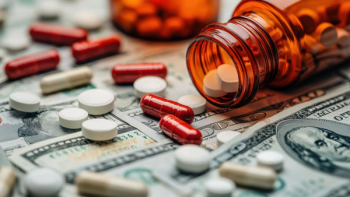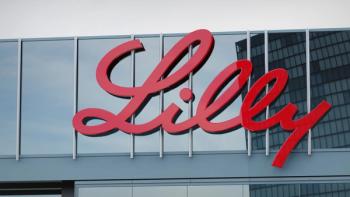
- Pharmaceutical Commerce - April 2024
- Volume 19
- Issue 2
Who Moved My Prescription? Part III
A breakdown of the issues surrounding retail pharmacy—and what can be done to address these difficulties in a timely manner.
In this third installment of my “Who Moved My Prescription?” I provide the baseline framework to help manufacturers and pharmacies understand what is broken with retail pharmacy and what to do about it.
Just two months ago, we had several key indicators of the state-of-the-state of retail pharmacy and why it is struggling to support brands and keep their pharmacy doors open. On Feb. 21, Walgreens was removed from the Dow Jones Industrial average.1 Walgreens was added to the Dow in 2018, having been fueled by its “hedgehog strategy” that was called out in Jim Collin’s 2001 book Good to Great. The strategy was simple: do one thing really well. For Walgreens, that was operating in the intersection of passion, talent, and the economic model. Clearly now, however, the economic model has been challenged.
Next, on Feb. 27, the National Community Pharmacists Association (NCPA), which supports almost 20,000 retail pharmacy stores, released a sobering report2 stating that a third of the nation’s community pharmacies are expected to either shutter their doors by mid-year 2024 or revert back to a cash-pay pharmacy model that resembles how retail pharmacies bought, operated, and dispensed drugs prior to the use of prescription benefit insurance that was materially introduced in the early to mid-1980s.
I keynoted the NCPA Multiple Locations meeting on March 2, sharing my thoughts on the situation and the views from the pharma manufacturer community on the problem and what is being done. At this meeting, it was apparent that retail pharmacy leaders do not understand how the reimbursement and cost of goods frameworks govern their businesses.
Let’s first review bundled reimbursement by the pharmacy benefit manager (PBM). Retail pharmacy has products on which it makes astronomical percentage margin and equally staggering losses at the product level. What frustrates pharmacies in this bundle is the inability to see the plan in its entirety and respond to the mix of business across the various commercial, Medicare, and Medicaid plans. When a PBM negotiates reimbursement with a pharmacy, there are a number of data points that drive pricing: brand rate, generic rate, and specialty rate. and how those rates vary across a 30- or 90-day fill; the pharmacy’s brand effectiveness rate (BER), requiring the pharmacy to dispense at least 15% of their dollars as generics; the unique product-level national drug code (NDC); and some quality metrics that concern medication therapy management (MTM). Trying to make sense of what the PBM is doing at the product level can be very confusing without stepping back and looking at the entire bundle. I’ve personally run the analysis for one PBM buying another and have witnessed the complexity first-hand.
The second issue is bundled purchasing and cost of goods from the wholesaler. The retail pharmacy community has shifted from buying direct in the late 1980s/early 1990s to buying through the wholesale distributor. The retail pharmacies moved this way because the wholesaler was able to mine a better cost of goods than the pharmacy, pass on enough margin to incent the pharmacy to buy and keep enough to operate, and make a targeted margin.
The bundle in wholesale is a little more straightforward than the PBM bundle. The wholesale bundle crosses generic and branded pharmaceuticals. Wholesalers typically make 10% to 20% margins on generics when selling to retail pharmacy and have gross margins on brands of roughly 3.8% to 3.9%, based on research my company IntegriChain/Blue Fin Group has tracked for decades. Wholesalers will sell brands to pharmacies between cost less 3.5% to 6%, depending on the mix of brands and generics of the pharmacy and volume/cost to serve the pharmacy.
Similar to PBMs, if a pharmacy buys more than 85% of its business in brands, the pharmacy pays a higher cost of goods on its brands. With 92% of the prescriptions leaving a pharmacy as generics, we would think that would be a realistic target, but it is not. It’s hard because our industry hasn’t seen material new generic volume since the end of the 2017 general medicine patent cliff, and brands have continued to increase price and launch at higher and higher price points to accommodate for large, mandated percentage rebates and fees from the PBMs and wholesalers. What this means to the pharmacy is that it currently has little to no control over its sourcing. Pharmacies have forgotten their old ways of buying—as opposed to changing reimbursement, the ability to change cost of goods is much more in the control of retail pharmacy.
Due to an inability to buy brands from wholesalers, many pharmacies, especially in mental health and HIV, have been going direct brand-by-brand for the last three to five years. These brands are being sold to pharmacies between wholesale acquisition cost (WAC) less 5% to 10%, which is really helpful against a reimbursement rate that is trending toward average wholesale price (AWP) less 20% to 23% now that direct and indirect renumeration (DIR) fees are being put on the front side of the prescription adjudication process.
At the moment, there are no good distribution alternatives to the full-line wholesaler, so manufacturers are working with third-party logistics (3PL) providers that are not owned by the wholesalers to enable this direct transformation. Companies like Medigi are coming to the aid as well to help manage the financials by offering a central place for pharmacies to order from multiple manufacturers, while providing a service for the manufacturers to credit check the pharmacy, and to manage the receivables and any bad debt scenarios that may occur. In addition, drugmakers are currently offering direct options for cell and gene therapy, orphan and rare, specialty, and specialty-lite products.
That brings us to the final issue and the proverbial “throwing a can of gas on the fire.” As of 2023, the market to launch brands into retail pharmacy has fundamentally shifted. The average price of a general medicine product was typically between $100 to $800 a month. With PBMs asking for an average rebate of 60% for basic coverage and wholesalers asking for 10% to 15% for distribution, manufacturers find themselves in a position where the WAC/list price of the product needs to be something like two times the high end of the range to cover the desired dollars from the intermediaries and achieve net in their revenue forecasts. This means that some products will likely launch at a price of $1,600 or more—going as high as $2000 a month.
This higher price point is hurting the pharmacies’ ability to buy these products at the right rate without suffering material losses on the price increase for the rest of their brands if that branded dollar percentage goes above the 85% level. This is evident in mental health in the last five to six years, as innovation now is returning to this area that operated in a sea of generics for the last 15 or so years.
So while the situation is frustrating, perhaps this is the inflection point the industry needed to realize that bundles are bad for a pharmacy, reimbursement will be hard to change in the short run, and changing the way a pharmacy sources product is the most controllable and timely way to resolve the situation and for manufacturers to ensure that they have a retail pharmacy market that is capable and willing to accept and dispense prescriptions for brands.
About the Author
Bill Roth is the SVP of IntegriChain’s consulting business, which includes Blue Fin Group, a strategy consulting company he started in 2001, and the IntegriChain advisory services business.
References
1. Mishra, M.; Khandekar, A. Walgreens Drops After Losing Spot in Blue-Chip Dow Index. Investing.com. February 21, 2024.
2. Local Pharmacies on the Brink, New Survey Reveals. NCPA. February 27, 2024.
Articles in this issue
over 1 year ago
Pharmaceutical Commerce - April 2024 Issue (PDF)over 1 year ago
Cold Chain, PBMs, and Moreover 1 year ago
Looking Ahead to LogiPharma Europeover 1 year ago
Fail-First Policies Are Harming Patientsover 1 year ago
In Search of the ‘Bad Guy’over 1 year ago
What Will Change in the Pharma Industry Look Like?Newsletter
Stay ahead in the life sciences industry with Pharmaceutical Commerce, the latest news, trends, and strategies in drug distribution, commercialization, and market access.





